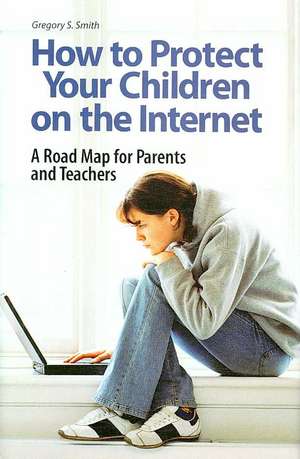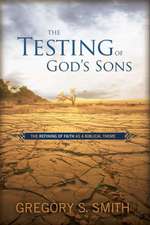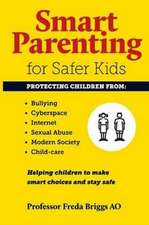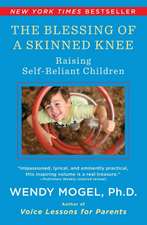How to Protect Your Children on the Internet: A Road Map for Parents and Teachers
Autor Gregory S. Smithen Limba Engleză Hardback – 29 aug 2007 – vârsta până la 17 ani
Preț: 287.74 lei
Preț vechi: 349.76 lei
-18% Nou
Puncte Express: 432
Preț estimativ în valută:
55.06€ • 58.88$ • 45.91£
55.06€ • 58.88$ • 45.91£
Carte tipărită la comandă
Livrare economică 17 aprilie-01 mai
Preluare comenzi: 021 569.72.76
Specificații
ISBN-13: 9780275994723
ISBN-10: 0275994724
Pagini: 216
Dimensiuni: 156 x 235 x 22 mm
Greutate: 0.51 kg
Editura: Bloomsbury Publishing
Colecția Praeger
Locul publicării:New York, United States
ISBN-10: 0275994724
Pagini: 216
Dimensiuni: 156 x 235 x 22 mm
Greutate: 0.51 kg
Editura: Bloomsbury Publishing
Colecția Praeger
Locul publicării:New York, United States
Notă biografică
Gregory S. Smith is Vice President and Chief Information Officer (CIO) of Information Technology at the World Wildlife Fund in Washington, D.C. and Adjunct Professor in the School of Professional Studies in Business and Education Graduate Programs at The Johns Hopkins University. He is an expert in the field of information technology with several technical articles and public speaking engagements to his credit. In addition, he is the author of Straight to the Top: Becoming a World-Class CIO.
Recenzii
[S]hares the risks of the Internet by detailing recent, real-world tragedies and revealing some of the secrets of online activities. The book offers a comprehensive overview of the ways in which youth use such technologies and exposes the risks they represent.
[A] thorough if occasionally geeked-out look at the technologies children are using and the steps parents must take to minimize their kids' chances of having a bad experience online. Smith, the chief information officer for the World Wildlife Fund, shows the 5 million ways your kids can get around the basic barriers many parents set up. He advocates a more deliberate, comprehensive approach, including aggressively limiting your child's Internet use: For middle schoolers, he recommends banning instant messaging, blocking search engines such as Google and denying access to free e-mail services such as Yahoo Mail. The amount of technical detail will liberate some and overwhelm others (hey, welcome to the Internet, folks), but you can always skip to Smith's helpfully specific recommendations, including which filtering and monitoring programs work best.
Smith outlines methods for protecting children against online threats. He describes recent tragedies and shows how to protect against specific dangers, for parents or educators of children from age eight to 17. He specifically discusses how to monitor children online, with recommendations for surfing, blogs, and social networking; email; instant messaging and voice-over-IP, cell phones, and PDAs; and talking to children about risks. Information has been drawn from research reports, case studies, child advocacy organizations and web sites, interviews with experts and parents, and the author's own experiences as a parent, technology professional, and educator.
[A] thorough if occasionally geeked-out look at the technologies children are using and the steps parents must take to minimize their kids' chances of having a bad experience online. Smith, the chief information officer for the World Wildlife Fund, shows the 5 million ways your kids can get around the basic barriers many parents set up. He advocates a more deliberate, comprehensive approach, including aggressively limiting your child's Internet use: For middle schoolers, he recommends banning instant messaging, blocking search engines such as Google and denying access to free e-mail services such as Yahoo Mail. The amount of technical detail will liberate some and overwhelm others (hey, welcome to the Internet, folks), but you can always skip to Smith's helpfully specific recommendations, including which filtering and monitoring programs work best.
Smith outlines methods for protecting children against online threats. He describes recent tragedies and shows how to protect against specific dangers, for parents or educators of children from age eight to 17. He specifically discusses how to monitor children online, with recommendations for surfing, blogs, and social networking; email; instant messaging and voice-over-IP, cell phones, and PDAs; and talking to children about risks. Information has been drawn from research reports, case studies, child advocacy organizations and web sites, interviews with experts and parents, and the author's own experiences as a parent, technology professional, and educator.









